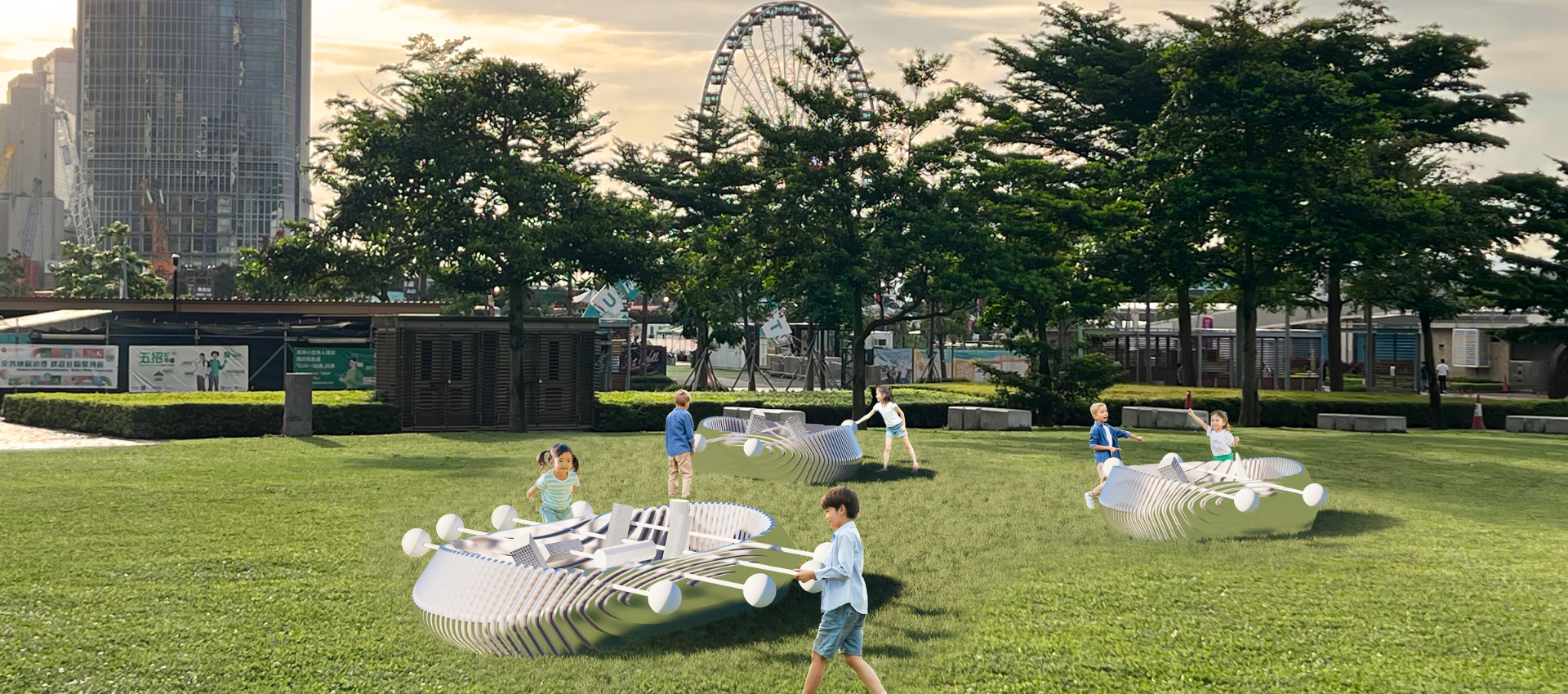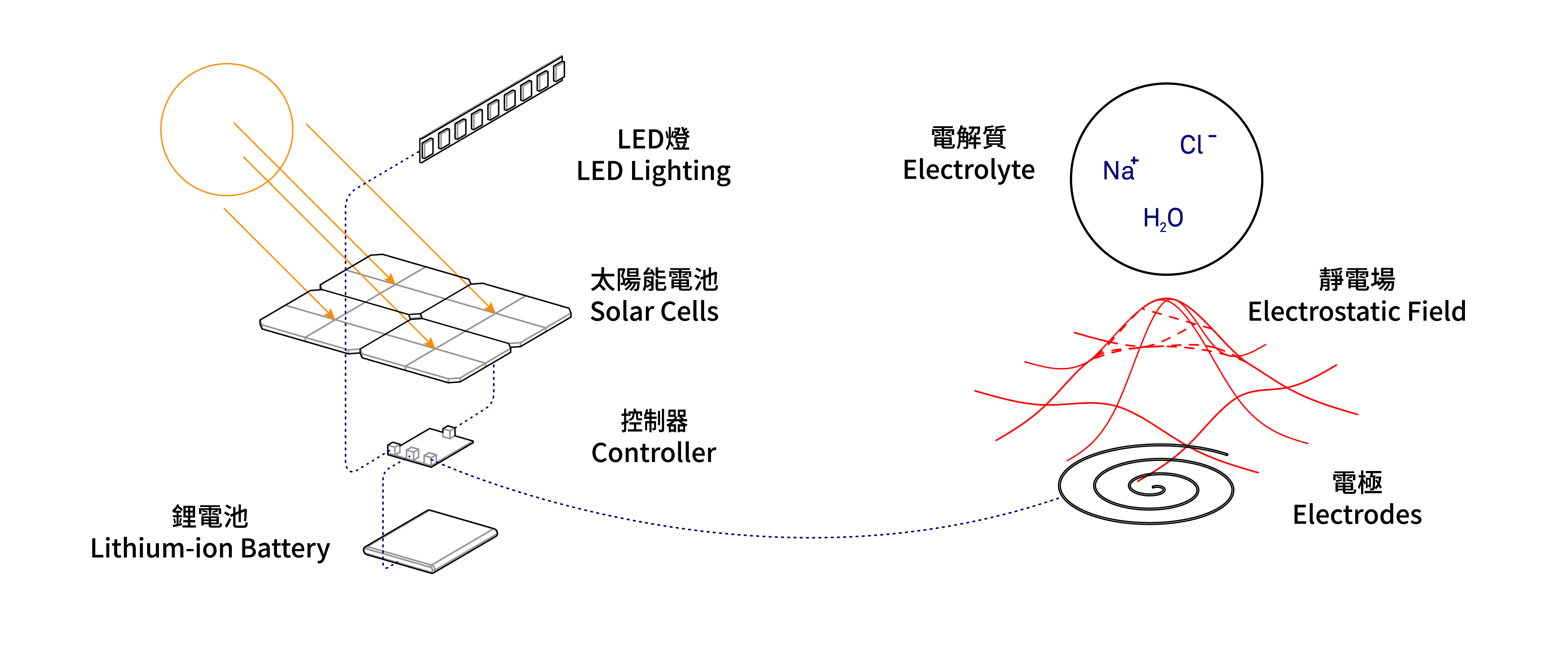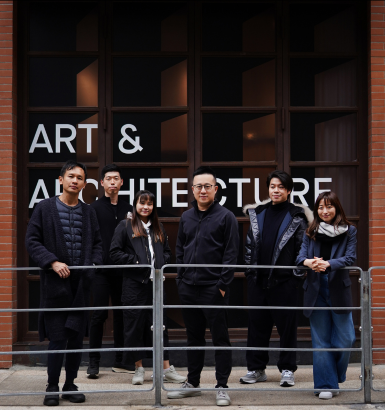Art Projects
Harbour Cup




Date & Time:
25.3 - 8.6.2024
24 Hours
Venue: Tamar Park
Free Admission
*The Organiser reserves the right to vary, amend, add, or revoke any terms and conditions of participation, the programme content and visit schedule at its sole discretion at any time without prior notice.
Sitting on the grass in the Central and Western District Promenade (Central Section), Harbour Cup is an artwork inspired by table soccer. The setup is similar to the game we all know, with one exception - there is no goal on either side. The players need to negotiate and decide how they want to play the game, be it competition or collaboration.
An array of photovoltaics-powered LED lights is installed underneath the artwork. When the ball is kicked, the movement triggers the sensors made of copper spiral coil inside the watertight 3D-print containers, lighting up the trajectory of the ball at night. The artwork comes in three pieces with different heights and dimensions welcoming people of various body sizes. Through Harbour Cup, LAAB encourages people of different ages to put down their phone and interact with each other through play.
Harbour Cup’s LED lighting is powered by solar cells and momentarily activated by an electrolyte ball when it rolls across a field of capacitive sensors.

Solar Cells
Think of solar cells as micro power stations that harness sunlight to generate electricity. They contain a semiconductor - a special material called silicon that gets excited when hit by light from the sun, freeing up electrons to create a flow of electricity. This electricity is what lights up the LEDs in the artwork.
We can use the direct current (DC) electricity right away, store it in batteries, or even change it into an alternating current (AC), to power household devices. When we link up many solar cells, we make a solar panel, which can power anything from a home appliance to an electric car.
Capacitive Sensor
Capacitive sensors can detect changes in capacitance to identify the presence of a target. They consist of conductive electrodes, such as a copper coil, wrapped around a non-conductive material, like the 3D-print polymer in the artwork. The coil generates an electrostatic field, and the LED is triggered whenever this field is disrupted.
Capacitive sensing technology is commonly used for touchscreens on smart phones and tablets. When an object, such as a human finger, comes close to the sensor's surface, it alters the local electric field, changing the capacitance. In the artwork, to allow a ball to trigger the capacitive sensor like a human finger, it needs to store charge. This is achieved by filling it with saturated brine. The sodium (Na+) and chloride (Cl-) ions in the electrolyte solution give the ball the ability to store electric charge.
LAAB is a laboratory for art and architecture dedicated to spatial innovation. Co-led by Otto Ng and Yip Chun Hang, the collective of artists, architects, designers, engineers, makers, and sociologists collaborate laterally to bring visionary ideas to life.
The studio believes that art and architecture can be a process of bringing people closer to nature, community, and culture. A precise blend of cutting-edge digital technology and traditional craftsmanship drives the studio’s design process of exploring inventive spatial experiences and details.
The work of LAAB includes art installations, interior, architecture, and public space. Notable projects include the Flying Window at the Hong Kong International Airport, Harbour Kiosk at the Avenue of Stars, and Hong Kong House at Echigo-Tsumari Art Field, Japan.
LAAB has been recognised for design innovations and craftsmanship by various international design communities, including Japan Good Design Award Best 100, Architizer A+ Awards, and Design Anthology Awards. In 2021, LAAB was named “The Best Design Studio” by INDE Awards.
